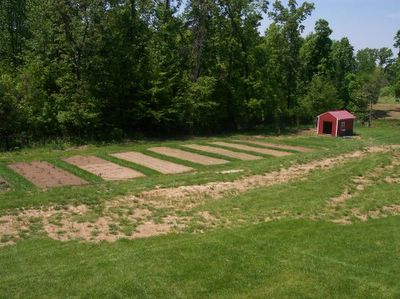A Call For Advice
I'm wondering if anyone would like to chime in with a little advice for me. I need to build some way to work the cattle. It seems as if there are as many ideas as there are people. I've seen some nifty designs that are way out of my league ($$$$) and I've seen some poorly conceived designs that are as awkward as they are dangerous. I currently have about 30 acres of good pasture that will be divided into approximately eight or so pastures for rotation purposes. I also have access to an additional 10-20 acres of neighbors' pastures. I would like to work the cattle in the area shown below. All that exists currently is the fencing (barbed wire) the water and electric stub, and the gates. If you click on the picture, you should be able to view a larger picture.

Parameters
I may be sharing a squeeze chute with a friend so that feature may need to be portable I would like to be able to work the cattle with as few hands as possible Exact positioning of the barn, etc. is flexible Will probably never handle more than 50 head or so
Any and all advice will be appreciated - whether philosophical, technical or both.
Keith

Parameters
Any and all advice will be appreciated - whether philosophical, technical or both.
Keith












